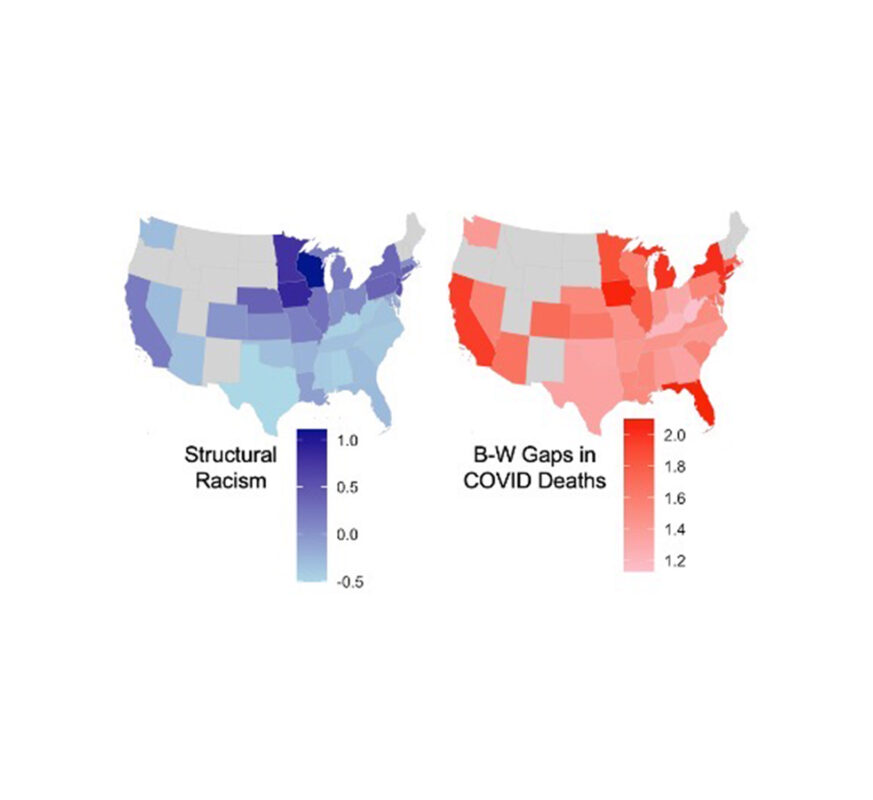Empirical evidence on structural racism as a driver of racial inequities in COVID-19 mortality
This study demonstrates a link between structural racism and disparities in COVID-19 death rates at the state level.
Summary:
The COVID-19 pandemic had a universal impact. However, compared to white Americans, Black Americans were far more likely to die from the disease. As of October 2022, adjusted for age, the COVID-19 mortality rate for Black Americans was 63% higher than that for whites.
Many scholars have investigated potential causes of this disparity, including already-present health and income inequalities along racial lines. However, in this study, Brown and his fellow researchers look farther upstream to the causes of those causes: complex, interlocking systems of structural racism.
Using a combination of validated measures—such as inequalities in housing, income, voting participation, and incarceration—that are further discussed in Brown and Homan’s 2024 article, Brown and his associates assess the level of structural racism in 37 U.S. states. They then compare these measures to the COVID-19 mortality rates in each state.
This study yields three key findings. First, different states exhibit different levels of structural racism. Second, there was significant variation among states in the magnitude of the disparity between Black and white COVID-19 deaths. Finally, higher structural racism scores were correlated with larger racial inequality in COVID-19 mortality rates.
In other words, while Black mortality rates were higher across the states, the gap between Black and white was larger in states with more structural racism. This suggests not only that structural racism has deadly consequences, but also that state-level policy has a profound impact on the life chances of residents.
Brown, Tyson H., Christina Kamis and Patricia Homan. 2022. “Empirical evidence on structural racism as a driver of racial inequities in COVID-19 mortality.” Frontiers in Public Health 10:1007053.

